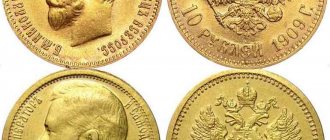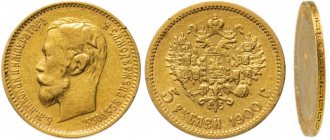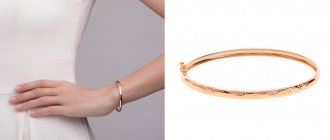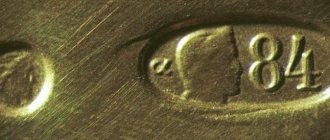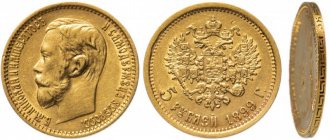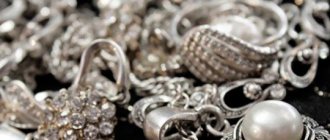Modern dentistry does not stand still and today metal-free types of dentures are very popular. However, gold crowns should not be written off just yet, as they have a number of advantages. The positive properties of gold structures include, first of all, their operational characteristics. In addition, gold is a very malleable metal that is easy for a dentist to work with.
After the crowns are made from precious metal, they are placed in their permanent place and, if necessary, can be easily corrected.
Gold is a noble metal and does not have a negative effect on the human body; this is its main advantage in contrast to other metals and alloys.
Just a few years ago, crowns made of precious metals were an indicator of a person’s well-being in society, and everyone who had them tried to beautifully “show off” their precious teeth at any opportunity. Nowadays such dentures have a ceramic coating, which provides them with an excellent appearance.
The use of gold in dental practice
The making of gold crowns dates back 4,000 years ago in Southeast Asia.
In Luzon, an island in the Philippines, the earliest traces of gold teeth were found between the fourteenth and fifteenth centuries. Gold teeth were also discovered when the Spanish colonized the Philippines in 1571.
Teeth made of precious metals became a sign of social distinction for the chiefs and political ruling class of Southeast Asia. The appearance of gold teeth symbolizes wealth, power and status. They are commonly found in the mouths of famous athletes and musicians.
This metal had certain aesthetic benefits for ancient patients, but its real usefulness in dentistry lies in the fact that it does not react with other metals. It can interact with water, air, food and human oral environment without forming rust.
Benefits of use:
- Durability.
- Kudos.
- Aesthetics.
- Strength.
- Plastic.
- Does not oxidize.
- Does not cause allergic reactions or rejection.
If the design has the correct contours and relief, then the patient will not have a long period of adaptation, the correct bite will be maintained and the chewing function of the tooth will be preserved.
The main positive quality of a precious metal crown is its durability; on average, items made from gold can sometimes last almost 20 years and never break down like porcelain. One of the significant advantages is the relative smoothness of the material, which creates a natural cleanliness in the oral cavity, reducing the number of bacteria. Crowns made of precious metal do not damage opposing teeth, unlike porcelain restorations.
Contraindications for installing crowns
- the patient is under 16 years of age;
- increased dental mobility was diagnosed;
- the presence of chronic periodontitis;
- the patient has mental illnesses;
- pregnancy.
Dentist with dentures
Distinctive features
Gold dental crowns are a “cap” for the teeth. In fact, they are not made of pure gold. Typically 900 gold is used. The metal in its pure form would be too soft, making it difficult to work with. Instead, gold is combined with other metals to create a much stronger gold alloy. The actual gold content can range from 20% to 77%.
Another important advantage of using this metal for dentures is that the rate at which gold contracts and expands is similar to the physical properties of a natural tooth. This prevents the gold from cracking, chipping or chipping away from the cutter. In addition, the smoothness and purity of the noble metal are commendable. Dentures do not stain or darken over time.
Types of crowns
Gold restorations are usually formed from jewelry grade gold, but can also be made from other alloys. There are different types of metals, including high noble, noble and base metal alloys.
There are two main types of gold structures in dentistry:
- Made of pure gold. These products have anti-inflammatory properties and do not oxidize. Since Ancient Times it has been known that crowns made of gold have a healing effect. Nowadays, they are covered with a thin layer of ceramic, as a result of which the products are practically indistinguishable from natural teeth. Such dentures are characterized by a tight fit and a long service life - up to 15 years.
- Made of gold-platinum alloy. They are not inferior in strength to structures made of gold. This sophisticated product fits very well, is highly durable and can last up to 20 years.
Installation of prostheses made of precious metal can only be carried out in public clinics. In order to provide this service to the population, the clinic must obtain a license, and this is very difficult. Private clinics can install prostheses made of metal alloys, which contain a certain percentage of gold.
This noble metal has another important quality: it is hypoallergenic, therefore suitable for those patients who have specific allergic sensitivities.
Since aesthetics has become a decisive factor in the modern world, the use of gold in prosthetics is decreasing. Most dentists themselves prefer precious metal restorations for their own teeth, knowing that they will serve well for several decades, in some cases over 50 years.
Indications
There are several cases in which the installation of crowns made of precious metals is indicated:
- If the patient needs to restore the anatomical shape of an organ.
- In order to maintain the function of the cutter.
- To strengthen teeth.
- To minimize the risk of organ fracture, for example after endodontic treatment.
- To improve aesthetics.
- With severe malocclusion.
- If the patient has bruxism and clenching of teeth.
- To restore the anatomy and functionality of chewing units.
Gold structures can withstand very heavy loads during chewing. They do not chip or break, making them durable dentures. When a tooth with a precious metal crown breaks, it is usually because the underlying structure of the incisor has already decayed.
Gold dentures also cause the least wear on opposing units. For patients who suffer from bruxism or have an overbite, a crown made of precious metal is more wear-resistant than natural enamel.
Indications for the installation of gold crowns
- it is necessary to accurately restore the shape of the teeth;
- the need to restore chewing teeth that are subject to heavy loads;
- the patient has a strong bite or has a habit of grinding his teeth or clenching his jaw tightly;
- the need to strengthen dental tissues;
- the need to improve the appearance of the dentition.
The benefits of crowns in the mouth
Using a gold crown is beneficial for the following reasons:
- the metal does not allow chewing teeth subject to constant stress to deteriorate;
- gold helps restore already destroyed tissues;
- often allows you to replace a natural tooth;
- helps hide imperfections in natural teeth that have irreversibly changed color.
Advantages and disadvantages
Positive properties:
- Crowns made of gold are compatible with any body tissue and do not cause allergies or rejection reactions.
- The tissues surrounding such a crown remain healthier, as irritation and sensitivity are minimized.
- Restoring an organ with a crown made of precious metal does not lead to problems with nerves and does not cause bleeding gums.
- Do not contain harmful impurities.
- The process of abrasion during operation is minimized.
- The material is not subject to oxidation.
- Suitable for restoring all types of units.
- Provide perfect aesthetics.
- Gold is very easy to process.
- Products made of noble metal fit tightly to the organ, which reduces the risk of caries.
Flaws:
- The main disadvantage is their expensive cost. In dentistry, high-grade gold is used, which is not cheap. But if you take into account the longevity of use of such crowns, then the price justifies them.
- In most patients, a thin strip of metal near the gums becomes visible, which of course spoils the aesthetic appearance of the smile.
- When installing crowns, the doctor must evaluate the condition of the patient’s oral cavity and the presence of other metal prostheses, since precious metal is capable of entering into undesirable physical and chemical reactions with them.
- Gold structures require care and oral hygiene.
Gold - why not!
Gold can only be dissolved in “aqua regia” - a mixture of concentrated hydrochloric and nitric acids.
This chemical inertness of this metal means that from a medical point of view, placing gold crowns is completely safe. Advantages of gold prostheses:
- Hypoallergenic
- The risk of caries is reduced, which is facilitated by the precision of the fit and the softness of the metal
- The thickness of the crown wall is small, so there is no need to prepare the tooth for it.
- Gold melts at temperatures above 10,000C, meaning hot foods and drinks will not cause an unpleasant taste or other unpleasant sensations in the mouth
For certain types of diseases or a tendency to allergic reactions, it is recommended to install only gold crowns.
For periodontal diseases, chronic gum inflammation, pathologies of the kidneys and endocrine system, it is recommended to install only gold dentures or crowns. The same advice applies to persons with an allergic reaction to alloys used in dentistry.
For the first time, in 1728, the French doctor Pierre Fauchard made a gold crown in the form of a cap and covered it with porcelain. At that historical period, such a product was very expensive and was a sign of high status in the society of its owner.
Manufacturing process
Types of crowns made of precious metals:
- The crown can be made entirely of gold.
- Modern designs are covered on top with a layer of porcelain, which is matched to the color of the patient’s tooth enamel.
In dentistry, there are three types of alloys used to make gold crowns:
- High-noble alloy - includes gold, platinum and palladium. If a combination of these alloys is used, at least about 40% of the item should be gold.
- Noble alloy - the prosthesis consists of 25% precious metal.
- Semi-Precious Alloy - The restoration is made from 25% precious metals, usually consisting of a combination of nickel, chrome and gold.
There are two types of prostheses:
- Stamped.
- Cast.
In order to fit a cast crown, a large amount of enamel must be removed during turning.
Precious metal dentures are used primarily to restore molars and premolars due to their classic yellow or white color. There are times when people want to get gold crowns for their anterior units. These are usually show business stars and rappers who choose such crowns as a fashion trend and encrust them with diamonds.
Due to its physical and chemical properties, gold is ideal for prosthetics. It is used for the manufacture of solid cast structures. Due to the fact that gold is a plastic material, it provides a tight fit to the organ. Due to its strength, the gold prosthesis does not lose its shape during many years of use. This design will not break and chips will not form on it. Dentists claim that the percentage of wear of a gold product is similar to that of natural enamel.
New trend for a golden smile
The fashion for gold teeth has been around for a long time. They are actively used in modern prosthetics. At the same time, flashing a golden smile with different inserts is now at the peak of popularity. For this purpose, grills are used - precious jewelry that can be worn on one or more front teeth.
Fashionable jewelry for teeth - gold grills
This accessory is not tightly fixed and can be easily removed if necessary. They can have absolutely any shape, be inlaid with stones, and made from various materials. You can buy jewelry in Russia via the Internet with delivery to Podolsk, St. Petersburg, Krasnoyarsk, Togliatti, Chelyabinsk, Samara and other cities of the country. You can also find a specialist who can make custom-made grills.
Recovery period
After the crowns are installed, the patient can lead a normal life. The doctor should tell the patient when it is possible to drink water, since it all depends on the type of cement that was used for fixation.
Note: In the first days after installation of the prosthesis, it is best to avoid hard foods, as you can bite your cheek, edge of your lip, and tongue.
The patient must first of all get used to having a permanent dental crown in his mouth.
The main problems that arise after installing gold crowns:
- Increased tooth sensitivity and discomfort. These unpleasant sensations appear when the person's anesthesia wears off. If during prosthetics the doctor did not consider it necessary to remove the nerve or depulpate it, then the organ will be very sensitive to hot and cold. In such a situation, the dentist recommends brushing your teeth with a special toothpaste designed for sensitive teeth.
- If a person experiences pain and discomfort when biting food, this indicates that the prosthesis is installed too high, but this problem can be easily corrected. If the patient gradually washes out the cementing substance from under the prosthesis, this facilitates the penetration of infectious agents.
- If the structure is not properly adjusted and cemented, the prosthesis may fall out.
How to make a sale
We accept dental gold in unlimited quantities. Clients can call our managers in advance and ask all their questions.
We work according to the “product-instant payment” scheme. Clients receive money immediately after the appraiser has inspected the material. Thanks to the availability of modern equipment and professional equipment, this process takes a few minutes. Inspection and evaluation of products is free of charge.
You will also not need to pay for cleaning of dirt, foreign inclusions and other structures. We purchase:
- dentures;
- pins and clasps;
- bridges;
- 850 gold in any form.
We offer our customers favorable prices - we evaluate all goods at their real cost.
Cost of gold crowns
Many dentists have a certain base price for all the products they offer to their patients, however, since gold is a very expensive alloy, a gold design may cost more than a porcelain denture. Increased costs are usually reflected in laboratory work rather than dental fees.
The final cost will be known after fitting the prosthesis. It all depends on how much the product weighs in grams.
In most dental clinics, the price of crowns made of precious metals starts at 6,500 rubles per product; if the weight increases by 1 gram, then the cost of the prosthesis increases by 2,500 rubles.
The price of precious metals fluctuates daily. Thus, the price will depend on the current price of gold on the market.
But, despite the high cost of this metal, prosthetics made of gold are cheaper than those made of ceramics and metal-ceramics, since crowns made of precious metal can last for decades.
Some small dental clinics offer their patients inexpensive golden-colored crowns. They look like pure gold but have a very low price. However, the problem with these dentures is that they are fake designs. They just look expensive, but will not have the quality of gold teeth. Noble metals are used for prosthetics because of their durability.
We offer an overview of turnkey prices in Moscow clinics for prosthetics:
| Clinic | Address | Price |
| Dentistry Mendeleev | St. Novoslobodskaya street, 36/1с1 | From 16,000 rub. |
| Dental Center Dental Implant | St. Pererva, 45 k1 | From RUB 29,000 |
| Dentistry Art Dent Club | St. 4th Tverskaya-Yamskaya, 2/11с1 | From 50,000 rub. |
| 24-hour dentistry Dianta | St. Krasnodarskaya, 57k1 | From RUB 22,000 |

